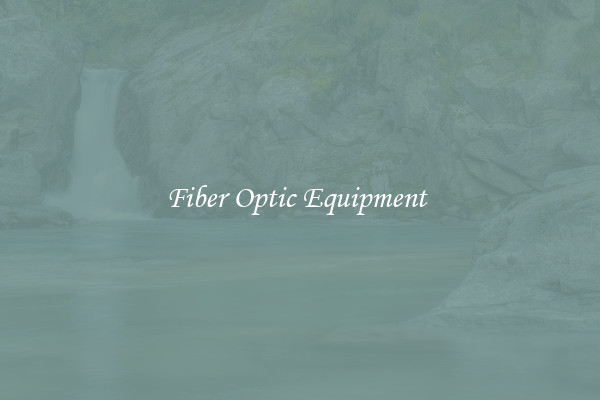Fiber Optic Equipment
Fiber optic equipment refers to the devices and components used in the transmission of data through fiber optics technology. Fiber optics has revolutionized the telecommunications industry by providing faster, more reliable, and high-quality data transmission capabilities.

One of the key components of fiber optic equipment is the fiber optic cable. These cables are made up of thin strands of glass or plastic, which are used to transmit light signals carrying data. Fiber optic cables have a much higher bandwidth capacity compared to traditional copper cables, which allows for faster data transmission over long distances.
Another important piece of equipment is the fiber optic transceiver. This small device converts electrical signals into light signals and vice versa, enabling data to be transmitted through the fiber optic cable. Transceivers are often used in networking equipment such as switches and routers, and they come in various types and form factors to accommodate different network configurations.
Optical amplifiers are another crucial part of fiber optic equipment. As light signals travel through fiber optic cables, they tend to weaken due to attenuation. Optical amplifiers are used to amplify these signals at regular intervals to ensure that they maintain their strength throughout the transmission process. This helps to prevent any degradation in signal quality or loss of data.
Fiber optic multiplexers are also vital components in fiber optic networks. These devices allow multiple signals to be transmitted over a single fiber optic cable simultaneously. Multiplexers are used to divide the fiber optic cable into multiple channels, each carrying a separate data stream. This technique maximizes the utilization of the cable's bandwidth and increases its overall capacity.
Switches and routers are other types of fiber optic equipment that play essential roles in network infrastructure. Fiber optic switches are responsible for connecting different devices within a network, enabling the exchange of data between them. Routers, on the other hand, are used to direct data packets between different networks, ensuring that the information reaches its intended destination efficiently.
In conclusion, fiber optic equipment is a crucial part of modern telecommunications infrastructure. It provides the means for high-speed, reliable, and efficient data transmission over long distances. From fiber optic cables to transceivers, amplifiers, multiplexers, and network devices such as switches and routers, these components work together to enable the seamless transfer of information. As technology continues to advance, fiber optic equipment will play an increasingly vital role in meeting the ever-growing demand for faster and more reliable data communication.

View details

View details

View details

View details








